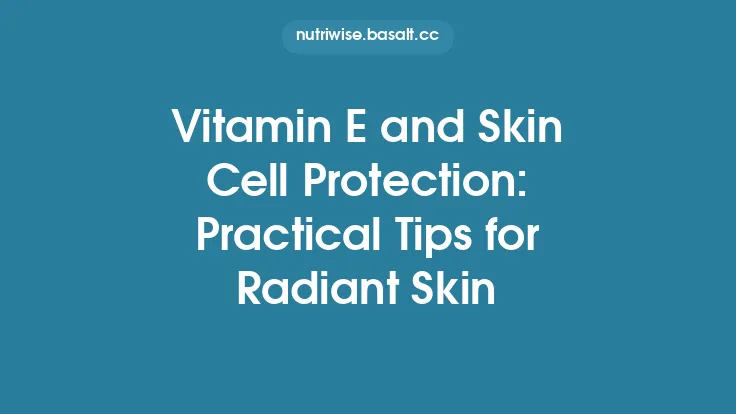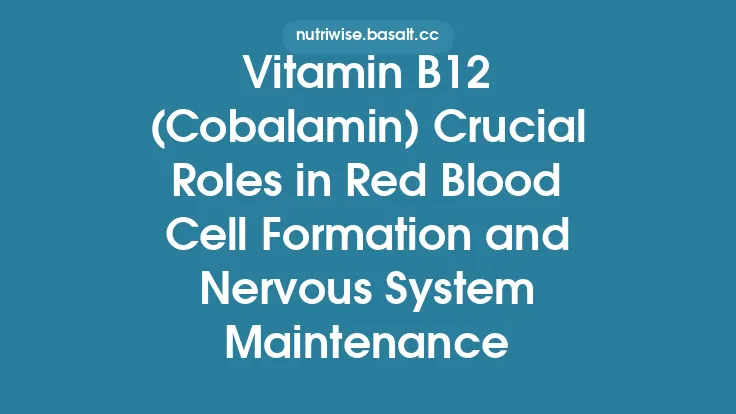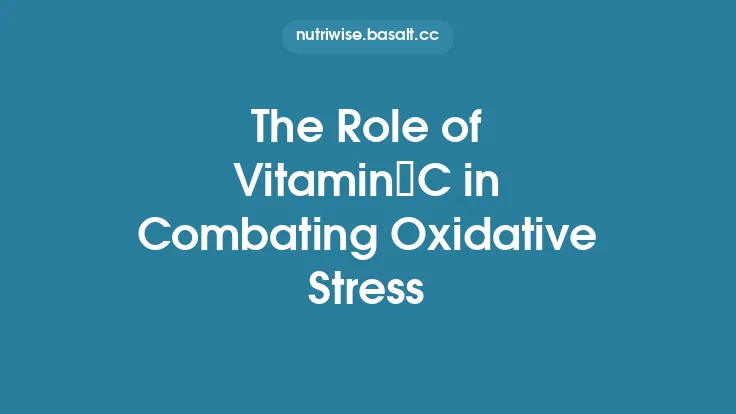Vitamin E, a family of lipid‑soluble compounds collectively known as tocopherols and tocotrienols, is uniquely positioned to safeguard the structural integrity of cellular membranes. Because the phospholipid bilayer is rich in polyunsaturated fatty acids (PUFAs), it is intrinsically prone to attack by reactive oxygen species (ROS). When ROS abstract a hydrogen atom from a PUFA, a lipid radical is generated, initiating a self‑propagating chain reaction that can culminate in membrane rupture, loss of ion gradients, and impaired signaling. Vitamin E intercepts this cascade at several critical junctures, acting as a “chain‑breaking” antioxidant that terminates radical propagation, stabilizes membrane architecture, and preserves the functional landscape of embedded proteins. Understanding the precise ways in which vitamin E interacts with membrane components provides insight into its indispensable role in cellular homeostasis.
The Structure of Cell Membranes and Their Vulnerability
Cell membranes consist of a phospholipid bilayer interspersed with cholesterol, glycolipids, and integral membrane proteins. The hydrophobic core is dominated by fatty‑acid tails, many of which are polyunsaturated. The presence of double bonds in PUFAs lowers the activation energy for hydrogen abstraction, making these tails especially susceptible to peroxidation. Lipid peroxidation proceeds through three phases:
- Initiation – ROS (e.g., •OH, •O₂⁻) abstract a bis‑allylic hydrogen from a PUFA, forming a lipid radical (L•).
- Propagation – The lipid radical reacts with molecular oxygen to generate a lipid peroxyl radical (LOO•), which then abstracts a hydrogen from a neighboring PUFA, perpetuating the chain.
- Termination – Two radicals combine, or an antioxidant donates a hydrogen atom to the peroxyl radical, halting the chain.
Because the membrane’s fluid environment allows rapid diffusion of radicals, unchecked propagation can quickly compromise large membrane domains, leading to loss of barrier function and altered protein conformation.
Vitamin E’s Molecular Architecture Enables Membrane Integration
The efficacy of vitamin E as a membrane protector stems from its amphipathic structure. Each tocopherol molecule possesses:
- A chromanol head group – a phenolic ring capable of donating a hydrogen atom to neutralize lipid peroxyl radicals.
- A hydrophobic side chain – a saturated phytyl tail (in tocopherols) or an unsaturated isoprenoid chain (in tocotrienols) that anchors the molecule within the lipid bilayer.
Molecular dynamics simulations reveal that the chromanol head preferentially orients toward the membrane surface, positioning the phenolic hydrogen within reach of peroxyl radicals that reside near the interface of the hydrophobic core and the aqueous environment. This orientation maximizes the probability of intercepting propagating radicals before they can abstract hydrogens from adjacent PUFAs.
Chain‑Breaking Antioxidant Action: Stopping Lipid Peroxidation
When a lipid peroxyl radical (LOO•) encounters vitamin E, the phenolic hydrogen (–OH) is transferred to the radical, converting it into a stable lipid hydroperoxide (LOOH) and generating a relatively stable vitamin E radical (tocopheroxyl radical, TO·). The reaction can be expressed as:
LOO• + TOH → LOOH + TO·
Key features of this process:
- Kinetic superiority – The rate constant for the reaction between tocopherol and LOO• (≈10⁶ M⁻¹ s⁻¹) exceeds that of most other membrane constituents, ensuring that vitamin E outcompetes PUFAs for radical capture.
- Stability of the tocopheroxyl radical – The delocalized unpaired electron over the aromatic ring and the resonance stabilization render TO· relatively inert, preventing it from propagating the chain further.
- Termination pathways – The tocopheroxyl radical can be reduced back to its active form by other antioxidants (e.g., vitamin C, glutathione) or by reacting with another tocopheroxyl radical to form a non‑radical dimer, thereby completing the antioxidant cycle.
By halting the propagation step, vitamin E effectively caps the chain reaction, preserving the surrounding phospholipids and maintaining membrane integrity.
Regeneration and Synergy Within the Lipid Bilayer
Although vitamin E can act as a “sacrificial” antioxidant, its continued protective capacity depends on regeneration. In the cellular context, several mechanisms restore the reduced tocopherol:
- Ascorbate (Vitamin C) Recycling – Ascorbate donates an electron to the tocopheroxyl radical, converting it back to tocopherol while itself becoming dehydroascorbate.
- Glutathione‑Dependent Enzymes – Glutathione peroxidase reduces lipid hydroperoxides (LOOH) to non‑reactive alcohols, indirectly lowering the burden of radicals that would otherwise oxidize vitamin E.
- NADPH‑Dependent Reductases – Enzymes such as NADPH‑quinone oxidoreductase can directly reduce tocopheroxyl radicals.
These regeneration pathways create a network of antioxidant cooperation that sustains vitamin E’s membrane‑protective role over extended periods, especially under conditions of chronic oxidative stress.
Impact on Membrane Fluidity and Protein Function
Beyond preventing lipid peroxidation, vitamin E influences the biophysical properties of the membrane:
- Fluidity Modulation – By occupying space within the hydrophobic core, tocopherols can slightly increase membrane order, counteracting the fluidizing effect of oxidized lipids. This helps preserve optimal lipid packing and prevents the formation of “leaky” domains.
- Protection of Integral Proteins – Oxidative modifications of membrane proteins (e.g., carbonylation, cross‑linking) can impair receptor signaling, ion transport, and enzymatic activity. Vitamin E’s ability to limit lipid peroxidation reduces the secondary oxidative damage to protein side chains that are often mediated by reactive lipid aldehydes (e.g., 4‑hydroxynonenal). Consequently, the functional conformation of channels, transporters, and receptors is better maintained.
- Preservation of Lipid Rafts – Cholesterol‑rich microdomains (lipid rafts) are essential for signal transduction. Oxidative disruption of raft lipids can disassemble these platforms. Vitamin E’s localization within rafts helps stabilize them against oxidative fragmentation.
Collectively, these effects ensure that the membrane remains a reliable barrier and signaling platform.
Experimental Evidence from Model Systems and In Vivo Studies
In Vitro Liposome Models
- Liposomes composed of phosphatidylcholine and linoleic acid exhibit rapid peroxidation when exposed to Fe²⁺/ascorbate. Inclusion of α‑tocopherol at physiological concentrations (≈10 µM) reduces malondialdehyde (MDA) formation by >70%, confirming its chain‑breaking capacity.
Cell Culture Experiments
- Human endothelial cells pre‑treated with 50 µM α‑tocopherol show a 60 % decrease in ROS‑induced loss of membrane potential (measured by DiBAC₄(3) fluorescence) compared with untreated controls. Western blot analysis reveals preserved phosphorylation of eNOS, indicating maintained signaling integrity.
Animal Models
- Mice deficient in the α‑tocopherol transfer protein (TTP) display markedly increased levels of lipid peroxides in brain membranes and develop neurodegeneration reminiscent of human ataxia with vitamin E deficiency. Repletion with α‑tocopherol restores membrane lipid composition and improves motor function, underscoring the in vivo relevance of vitamin E’s protective role.
Human Observational Data
- Cohort studies have correlated plasma α‑tocopherol concentrations with lower biomarkers of oxidative membrane damage (e.g., F₂‑isoprostanes) in healthy adults, even after adjusting for dietary intake of other antioxidants.
These data collectively validate the mechanistic insights derived from biochemical studies and demonstrate that vitamin E’s membrane protection translates into functional outcomes across biological systems.
Factors Influencing Vitamin E’s Protective Capacity
- Isoform Specificity – α‑Tocopherol is the most abundant in human plasma due to preferential hepatic retention, but γ‑tocopherol and tocotrienols possess distinct reactivity toward nitrogen‑derived radicals and may complement α‑tocopherol’s activity in certain tissues.
- Membrane Composition – High cholesterol content can affect the depth at which vitamin E resides, potentially altering its accessibility to peroxyl radicals. Likewise, membranes enriched in saturated fatty acids provide fewer targets for peroxidation, reducing the demand on vitamin E.
- Oxidative Load – Under extreme oxidative stress (e.g., ischemia‑reperfusion), the rate of radical generation may exceed the regeneration capacity of vitamin E, leading to net depletion.
- Age and Metabolic Status – Aging and metabolic disorders (e.g., diabetes) can impair the activity of recycling enzymes, diminishing the efficiency of vitamin E regeneration.
- Genetic Variants – Polymorphisms in the TTP gene affect tissue distribution of α‑tocopherol, influencing individual susceptibility to membrane oxidative damage.
Understanding these variables helps explain inter‑individual differences in vitamin E efficacy and informs strategies to maintain optimal cellular levels.
Implications for Health and Disease Prevention
Because membrane integrity underlies virtually every cellular process, vitamin E’s defensive role has broad implications:
- Neuroprotection – Neuronal membranes are rich in PUFAs; preserving their structure helps maintain synaptic transmission and may slow neurodegenerative processes.
- Cardiovascular Health – Endothelial cell membranes regulate vascular tone; preventing lipid peroxidation reduces endothelial dysfunction, a precursor to atherosclerosis.
- Immune Function – Membrane fluidity influences receptor clustering on immune cells; vitamin E helps sustain effective pathogen recognition and cytokine signaling.
- Metabolic Homeostasis – Membrane transporters for glucose and lipids rely on proper lipid environment; oxidative preservation supports metabolic balance.
While these outcomes are multifactorial, the central contribution of vitamin E in maintaining membrane resilience is a recurring theme across disease models.
Practical Considerations for Maintaining Adequate Cellular Levels
- Balanced Diet – Consuming a variety of foods that naturally contain different vitamin E isoforms supports a comprehensive antioxidant profile.
- Synergistic Antioxidants – Ensuring sufficient intake of water‑soluble antioxidants (e.g., vitamin C, glutathione precursors) facilitates the regeneration of oxidized vitamin E within membranes.
- Lifestyle Factors – Minimizing exposure to excessive oxidative stressors (e.g., smoking, UV radiation, chronic inflammation) reduces the turnover demand on vitamin E.
- Monitoring – In clinical settings where membrane oxidative damage is a concern, plasma α‑tocopherol measurement can serve as a proxy for tissue status, guiding nutritional or therapeutic interventions.
By aligning dietary patterns and lifestyle choices with the biochemical needs of cell membranes, individuals can harness vitamin E’s intrinsic capacity to defend against oxidative injury, thereby supporting long‑term cellular health.





